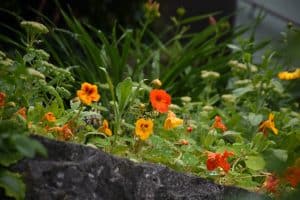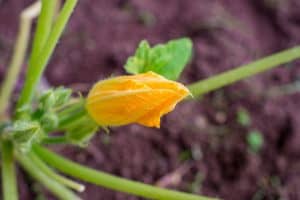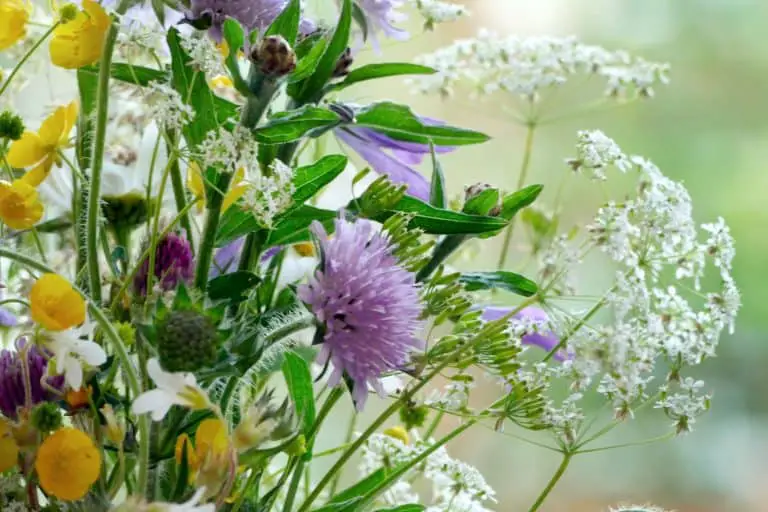Growing edible flowers has become my secret weapon for creating unforgettable dishes that dazzle at dinner parties. It’s a simple yet sophisticated touch that can transform any meal from ordinary to extraordinary. Whether you’re a seasoned gardener or a curious newbie, cultivating these blooms is surprisingly manageable, even in the smallest of spaces.
I’ve discovered that these vibrant, tasty petals are not just for professional chefs; they’re for anyone looking to add a splash of color and a burst of flavor to their culinary creations. So, let’s dive into the world of growing edible flowers, where beauty meets the plate, and every dish becomes a work of art.
Choosing the Right Flowers to Grow

Growing edible flowers has become a delightful trend for gardeners and food enthusiasts alike. As both a garnish and a flavorful addition to meals, these blossoms bring a unique fusion of color and taste to the dining table. So let’s dive into how to select the best edible flowers for your garden.
Starting with the Basics of an Edible Flower Garden
Edible flowers come in myriad varieties, each with their own specific growing requirements and unique flavors. To start your edible flower garden, it’s essential to consider climate compatibility. I’ve learned through experience that not all flowers will thrive in every growing zone. For example, the sunny spot in your garden is ideal for lavender and chamomile, which are not only easy to grow but are also versatile in various dishes, from sweet desserts to savory salads.
In early spring, planting edible flowers such as calendula and viola can yield early blooms, which add zest to both sweet dishes and egg dishes. Conversely, for a late-season bounty, early autumn is perfect for edible flowers like marigolds, which exhibit a slightly peppery taste, perfect for spicing up rice dishes and other dishes.
Maximizing Your Space for Growing Edible Flowers
Even if you’re limited on space, don’t worry – edible flowers to grow indoors can still flourish. Opting to grow in containers with well-draining soil will let you enjoy an array of smaller flowers like pansies, which offer a mild flavor for salads and ice cubes. Placing these pots in a sunny spot or under full sun on your balcony or window sill can mimic outdoor growing conditions.
Harvesting Blooms for Meals
When my flowers are fully bloomed, I’ll start harvesting blooms for meals. The key is to pick only the petals of most flowers, as only the petals are typically safe and palatable. Flowers like squash blossoms can be eaten whole, but remember to remove the seed pods from flower heads before adding them to your dishes.
Planning and Preparing Your Garden

When it comes to growing edible flowers, the first step is planning and preparing your garden. As a gardener, I’ve learned that success begins long before you plant the first seed. Whether you’re cultivating an edible flower garden for their aesthetic beauty or the delightful flavors they bring to meals, the groundwork is key.
Selecting Soil and Location
The best edible flowers thrive in well-drained soil and a sunny spot, but some can tolerate partial shade. It’s vital to assess the area where you want to grow edible flowers. Ensure your soil is fertile by adding organic compost to provide necessary nutrients.
- Nasturtiums need full sun to flourish and boast a peppery flavor that’s a perfect kick for salads.
- Chive flowers, on the other hand, have a mild flavor and their purple blossoms can elevate the visual appeal of various dishes.
- If you’re into sweeter tastes, consider planting some roses or lavender, as their petals can be used in desserts and impart a subtle flavor reminiscent of honey.
Choosing the Right Flowers
When selecting the best edible flowers for my garden, I focus on a few key aspects:
- Flavor profiles: I like to have a mix of floral notes for different types of dishes. For instance, borage with its slightly cucumber taste is fantastic in cool drinks or ice cubes, while the citrus tang from begonia is ideal for sweet dishes.
- Harvest times: I pick flowers like squash blossoms in early morning when they’re fully bloomed. It’s the perfect time as the flavor is at its peak and the flowers are most fresh.
- Aesthetic variety: Flowers like pansies, with their array of colors, provide more than just a garnish; they’re a feast for the eyes too.
- Health considerations: It’s critical to ensure none of my dinner guests have allergic reactions to certain flowers or medical conditions that could be exacerbated by them.
Pro Tips for Success
Growing Edible Flowers: A Step-by-Step Guide
Growing edible flowers can add a unique and enchanting dimension to my garden. To ensure a flourishing edible flower garden, I’ve put together a slew of insightful tips to keep me on track.
- Select Well-Drained Soil: Whether I’m planting nasturtiums or roses, ensuring a well-draining soil condition is paramount. Edible flowers thrive in a soil mix that allows for proper water drainage, preventing root rot and other water-related issues.
- Location Matters: For optimal growth, my edible flower garden must have access to full sun or at least partial shade. A sunny spot encourages more flowers, while some—like violas—prefer a bit of shade during the hottest part of the day.
- Timing Is Everything: Early spring is ideal for starting most flowers. It’s also the best time for me to plant chive blooms and other perennials that can withstand cooler temperatures.
Caring for Your Edible Flowers
When it comes to growing edible flowers, understanding the nuances of care is paramount to ensure a plethora of vibrant blooms ready to elevate any dish. Cultivating an edible flower garden isn’t just about planting seeds; it’s also about the ongoing maintenance to bring those seeds to life as full-fledged, flavorful blossoms.
Selecting the Ideal Location
Finding the perfect spot can make a significant difference. I always look for a sunny spot because most flowers need full sun to thrive—edible flowers included. Ideally, they require 6 to 8 hours of sunlight daily. However, some, like nasturtiums, can manage with partial shade, particularly in hotter climates where the afternoon sun can be a bit too intense.
Soil Preparation is Key
The foundation of a successful edible flower garden lies in the soil. A well-drained soil is crucial, as waterlogged roots can spell disaster for many plants. For my garden flowers, I mix in organic material to enrich the native soil, ensuring it’s a well-draining soil that’s also rich in nutrients. Remember to test your soil’s pH and adjust accordingly for the best edible flowers to grow.
Watering Wisely
Consistency is important—I water my plants when the top inch of soil feels dry. Early morning is the best time to water, reducing evaporation and allowing leaves to dry out, which helps prevent fungal diseases. For edible flowers that grow in containers, check the soil moisture more frequently as they tend to dry out faster.
Managing Pests and Disease
Pests and disease can affect the yield and the aesthetic quality of your edible flowers. I’ve found that choosing disease-resistant varieties and maintaining healthy growing conditions are effective preventive measures. If pests appear, I opt for non-toxic methods like handpicking or a strong jet of water to remove them.
Harvesting and Using Your Blooms

Growing edible flowers can be a fruitful journey, especially when it’s time to harvest and use these vibrant blooms. The excitement of adding a burst of color and flavor to my meals never gets old. I’m here to share my tips on how you can make the most out of your edible flower garden.
Timing Is Everything in Growing Edible Flowers
The early morning is the prime time for harvesting most flowers, including those in my edible garden. At this time, the blooms are fully opened and brimming with natural beauty. It’s a perfect moment before the midday sun can dehydrate the petals. Squash blossoms are a favorite of mine and, like many edible flowers, they release their full potential if picked at the right time.
When I grow edible flowers, ensuring they’re at the peak of freshness is key. Only the petals of certain varieties like roses and chive blooms are meant to be eaten, so I make sure to gently remove them from the flower head to avoid any unwanted bitter flavors. The golden rule: pick frequently to encourage more flowers. Nasturtiums, for example, provide a peppery flavor that goes well in salads and can be picked often to maintain a steady supply.
From Garden to Table: Utilizing Edible Flowers
After the harvest, it’s crucial to understand how to incorporate these delights into your dishes successfully. The best edible flowers are not just a garnish; they can transform a dish. Take chive flowers, for instance, with their mild flavor that pairs perfectly with egg dishes. Or the bright orange and yellow petals of calendula—a wonderful addition to sweet dishes for a pop of color and a slightly bitter taste that complements the sweetness.
My favorite edible flower, however, has to be lavender. Its sweet, floral essence infused in honey is divine in desserts or other sweet dishes. And let’s not forget roses, whose petals can jazz up a simple dessert with their elegance and subtle floral notes.
Final Thoughts
Growing edible flowers can transform your culinary creations and garden landscape into a feast for the senses. With the right soil, location, and care, you’ll be on your way to a bountiful harvest. Remember to time your plantings and harvests to maximize flavor and aesthetic impact. Whether you’re sprinkling vibrant petals on a salad or infusing them into syrups, the possibilities are endless. Embrace the beauty and versatility of edible flowers and watch as they bring a new dimension to both your garden and your plate. Happy gardening!
Other suggested articles:


